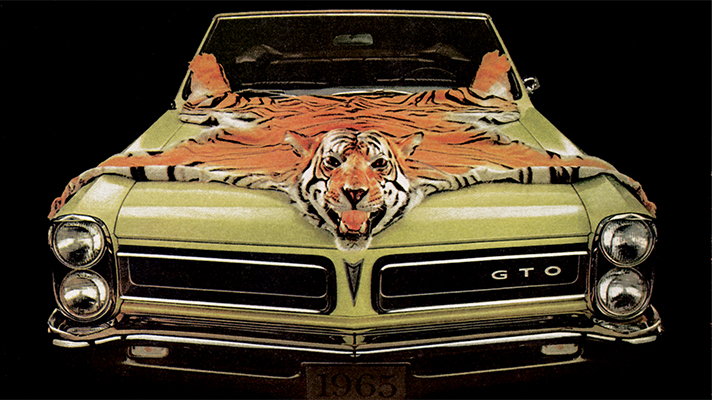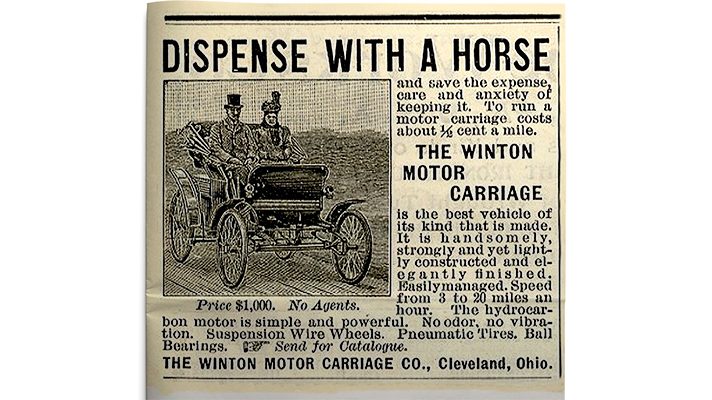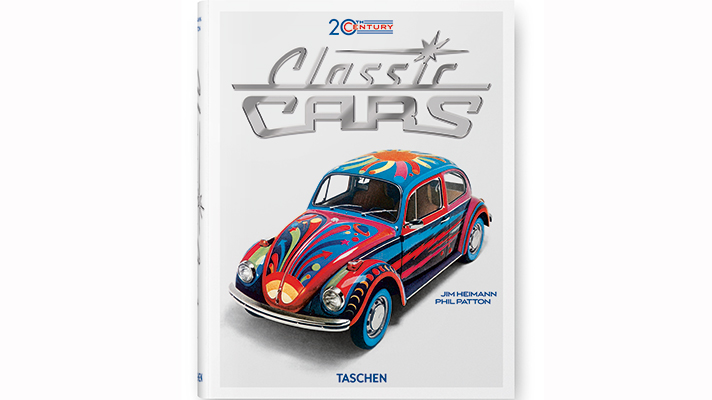
Selling the dream: how car ads evolved
"Dispense with a horse." Those were the words atop the world's first-ever car advert in 1898, for the Winton Motor Carriage. It clearly belonged to a more innocent age of motoring, when a car's main virtue was being a car. There wasn't much else to sell. But as the motorcar entered the 20th century, so did the advertising that sold it. Soon there'd be fanciful illustrations and bold straplines as carmakers competed for the attention of newly horseless humans. Over the next 100 years or so, we'd move through world wars, depressions and the space age, all of which provided ad men - the real-life Don Drapers - with the backdrop for their campaigns.
A new book by Taschen brings together some of the more notable - although mostly American - efforts from the last century. It's the story of the car, told via the advertising that paralleled it, spread over nearly 600 pages. And although it doesn't include that very first advert, it does cover the following decade when cars were still fighting for road space with hoofier means of transport. Back then, a car required a staff of at least one person to drive and maintain it. Which is why some ads targeted top-hatted partygoers, while others spoke to the chauffeurs waiting outside with promises of grippy tyres and effective lubrication.
"Ford advertising never attempts to be clever," said Henry Ford in 1912. But as the Twenties roared in, more carmakers experimented with grand campaigns, often featuring bright Art Deco illustrations. And by 1928, even old Henry had hired New York's finest to help flog his new Model A. The Madison Avenue agencies were beginning to make themselves felt. Then along came the first celebrity ambassadors, including chubby funster Fatty Arbuckle for General Motors. Even the gloom of Prohibition and Thirties Depression didn't stop the creative machine. As the book points out, the adverts - and the streamlined cars they depicted "cut through the economic drag of the decade".
Even through WWII, when carmakers switched production to supply the war effort, the ad men used the opportunity for a spot of propaganda. After the war, they capitalised on the rampant consumerism of the late Forties and the great American Dream of the Fifties. Cars grew longer and shinier, and illustrators stretched them further still, as if straining to reach the future as fast as possible. Cartoon rockets filled Jetsons skies, as drivers gazed upwards from tail-finned Mercurys and Meteors.
Then, in 1959, Volkswagen hired New York agency Doyle Dane Bernbach. The resulting ‘Think Small' campaign for the new Beetle was revolutionary. Here, quite literally in stark contrast to the American exuberance, was a little German car placed on a simple white background. The crisp photography gave no illusion. It was bold and honest and more than a little droll. It was also an enormous success, and began a whole new advertising movement. Straplines became smarter. Photos replaced artwork. The product became king.
Still, many American brands persisted with the rock 'n' roll and superlatives. Their ads featured big red boxing gloves and tiger skins stretched over Pontiac hoods. This was the age of the muscle car, goddammit, and who were those Europeans with their funny little cars, anyway? And so the ad world split into two schools, until - in the Seventies - came the oil crisis. And with it came the Japanese, with their pragmatic runabouts and attractive fuel economy. Suddenly those showy ads for homegrown V8s didn't seem so smart after all.
It wasn't until the mid Eighties that America got its mojo back. Wall Street had its wolves and - according to Gordon Gekko, at least - greed was good. Bankers' bonuses stoked the supercar market, and even Ferrari took out print ads - something it hasn't really done since. And so with the exotic metal began the era of the studio shoot, where clever lighting and trick exposures replaced the artist's pen. Ad men concentrated on style and luxury. Cars were pictured with models in sharp suits and nasty furs. It was all nauseatingly cheesy and ever-so-slightly sleazy.
The Nineties wasn't much better, and you could argue that - faced with bland SUVs and sensible finance deals - car adverts have never rediscovered their old form. But perhaps the Mad Men aren't to blame. All the while, their campaigns have merely reflected the world around them, their billboards and mag spreads forming a sort of cultural anthropology. Politics, pop culture, celebrity, society: maybe we've become too damn boring. Or maybe it's the tedious rules that - in Britain, at least - ban advertisers from showing anything as exciting as a burnout.
But maybe the good times are coming back. We might be done with rollergirls and pointy tail fins, but car tech is making big leaps again, and who knows where the next 100 years could take us? We have hyper-hybrids. Hydrogen fuel cells. And scientists are already bottling the antimatter that could, one day, give us perpetual motion. Surely you could knock up a decent advert from that lot...
Words: Dan Read
Looking for more from the USA?
Top Gear
Newsletter
Thank you for subscribing to our newsletter. Look out for your regular round-up of news, reviews and offers in your inbox.
Get all the latest news, reviews and exclusives, direct to your inbox.
20th Century Classic Cars: 100 Years of Automotive Ads is out now. £12.99; taschen.com
This feature was originally published in the March 2014 issue of Top Gear magazine
Trending this week
- Car Review
BMW 1 Series
- Top Gear's Top 9
Nine dreadful bits of 'homeware' made by carmakers










